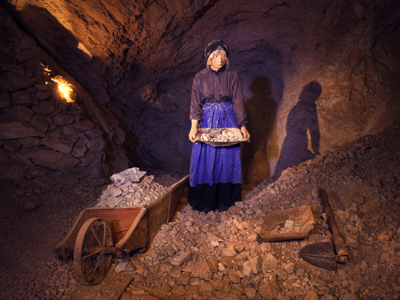
Ask the AI Tutor
Need help with Britain 1815-1851 - Living And Working Conditions? Ask our AI Tutor!
AI Tutor - Lucy
Connecting with Tutor...
Please wait while we establish connection

The invention of the Davy Lamp in 1816 made mines much safer places.
Britain 1815-1851 - Living And Working Conditions
Industrialisation transformed life in Britain. This GCSE History quiz explores crowded towns, harsh factory work, and the early efforts to improve working and living conditions.
1 .
Which businessman and philanthropist set up New Lanark Mills in Scotland, where an efficient business accompanied a regime of welfare for the workforce?
Robert Owen
William Hudson
Henry Chadwick
The Duke of Bridgewater
New Lanark Mills showed that it was possible to run a competitive business operation, while providing housing, medical care and education for the workforce
2 .
A second pandemic of which disease, spread by infected water, erupted in Britain from 1831?
Cholera
Typhus
Paratyphoid
Yellow Fever
Insanitary conditions, aggravated by poor and dense housing, encouraged the spread of certain diseases
3 .
In the early nineteenth century a group of workers began to destroy industrial machinery, arguing that increasing mechanisation would put jobs at risk. What name was given to this group?
Vandals
Luddites
Smashers
Breakers
This movement is best seen as a conservative reaction to rapid industrialisation
4 .
The New Poor Law of 1834 discouraged the provision of poor relief to anyone who refused to enter which kind of residential institution?
Workhouse
Penitentiary
Poverty Clinic
Foundling Hospital
These institutions provided extremely basic shelter and care to families, whose members were usually segregated
5 .
Which disease, sometimes also referred to as consumption, was common in Britain where dwellings were congested?
Smallpox
Typhoid
Tuberculosis
Pleurisy
Poor housing conditions clearly provided the conditions for the spread of contagious diseases
6 .
From 1831 a series of acts of Parliament dealt with those employers who compelled their employees to purchase goods in their own shops using tokens supplied by them. What name was given to these measures?
Retail acts
Shop Provision acts
Truck acts
Workers' Purchase acts
Before this legislation was passed employers could compel their workers to make basic purchases in factory outlets, to the profit of the employer
7 .
Between 1832 and 1844 a series of acts regulated the use of child labour. What name was given to these measures?
Child Employment acts
Child Labour acts
Factory acts
Child Worker acts
Restrictions were placed mainly on the hours that children were expected to work in certain types of employment
8 .
In 1834 a group of Dorset farm labourers was sentenced to transportation for attempting to organise a trade union. By what name were they known?
The Dorchester Three
The Tolpuddle Martyrs
The Dorset Heroes
The Dorsetshire Victims
Local landowners reacted harshly to the formation of this group and pressed for their transportation to Australia. Eventually the group was able to return to England, to find that they had become heroes of the labour movement
9 .
Who invented the safety lamp of 1816, which was - at least for a time - useful in enhancing safety in mines?
Lord Shaftesbury
Sir Humphry Davy
Robert Owen
Jeremy Bentham
Conditions in coal mines were poor: explosions were a regular threat as was poisonous air. The safety lamp seemed to be an important improvement in raising standards of safety and visibility
10 .
A close associate of Karl Marx wrote a comprehensive study in 1844 called "The Condition of the Working Class in England", based on his extensive research in the Manchester area. Who was he?
Friedrich Engels
Louis Blanc
Earl Grey
Feargus O'Connor
This work influenced the young Karl Marx, who believed that working conditions would steadily worsen, leading to the increasing alienation of the industrial working class
You can find more about this topic by visiting BBC Bitesize - Industrial Britain and the people's health, c.1750-c.1900
**Unlimited Quizzes Await You! 🚀**
Hey there, quiz champ! 🌟 You've already tackled today's free questions.
Ready for more?
Ready for more?
🔓 Unlock UNLIMITED Quizzes and challenge yourself every day. But that's
not all...
not all...
🔥 As a Subscriber you can join our thrilling "Daily Streak" against other
quizzers. Try to win a coveted spot on our Hall of Fame Page.
quizzers. Try to win a coveted spot on our Hall of Fame Page.
Don't miss out! Join us now and keep the fun rolling. 🎉
**Unlimited Quizzes Await You! 🚀**
Hey there, quiz champ! 🌟 You've already tackled today's free questions. Ready for more?
🔓 Unlock UNLIMITED Quizzes and challenge yourself every day. But that's not all...
🔥 As a Subscriber you can join our thrilling "Daily Streak" against other quizzers. Try to win a coveted spot on our Hall of Fame Page.
Don't miss out! Join us now and keep the fun rolling. 🎉






